In his popular cooking show "Good Eats," Alton Brown describes how to jury-rig a home meat smoker to make homemade bacon. Although he puts it together using humorously improvised parts, his plan is simple and workable. The home electric smoker needs five components: an electrical burner, a smoke chamber, duct work, a smoking chamber and a place to hang the curing meat.
The Electric Burner
The electric burner heats and burns wood chips to produce smoke for the curing process. You can buy stand-alone burners and hot plates at any appliance store, or check catering suppliers for higher-end, more portable models.
Do not burn the wood chips directly on this element. Set the wood chips in a fireproof container made of material that can conduct heat (such as a cookpot or baking pan). Wood chips should be from a hardwood, not a soft wood. Hard wood chips will burn more slowly, creating more smoke and less volume of flame.
The Smoke Chamber
The smoke chamber is a reasonably sealed area where you set the electric burner and the wood chips. On the TV show, Brown uses a school locker, but any fireproof container with a closing lid or door will do. When choosing your chamber, consider how much smoke will leak and place it an appropriate distance from your living space. Since the process takes hours, and you will want to leave the fire unattended, this container must be fireproof.
The Duct Work
The goal of the duct work is to allow a space for the smoke to pass through and cool on its way to the meat. Cold-curing is a different process from warm-curing (referred to by Brown as "cooking with smoke") and the smoke must be cool for this process to work properly.
The cheapest kind of duct work available is the flexible duct hose you use for your clothes dryer. The ducts should be attached to appropriate-sized holes in the smoke chamber and the smoking chamber. The points of attachment should be relatively airtight. If you intend to build a permanent smoker, you could use caulk to seal the hole. For temporary construction, several layers of duct tape will do the trick.
The Smoking Chamber
This is very similar to the smoke chamber. This is where the meat hangs, mingling with the cool smoke generated in the smoke chamber and moved through the duct work. It should seal reasonably well and have enough space for your meat to hang without touching the surface of the chamber or other pieces of meat. Although it's not as vital that this chamber be fireproof, it's best if you can make it out of fireproof material.
Hangers
Dangle hangers from the ceiling of the smoke chamber. Commercial meat hooks are a good choice for this, although you can use large, non-snelled fish hooks or even paper binding clamps (metal, not plastic) for the job. Whatever you use, run lengths of wire or cord along the ceiling and string your hangers from them. This will allow you to adjust the position of your hangers easily as needed for different smoking jobs.
Related Articles

How to Make a Cheap Smoker

Cooking Times for Smoking Meat in an ...
How to Cook With a Reverse Flow Smoker

Do You Cold-Smoke Venison Sticks or ...

How to Cook Beef Teriyaki Jerky in a ...

How to Use Wood Chips in a Smoker
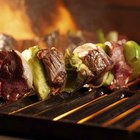
Tips on Grilling With the Char-Broil ...

How to Use an Offset Smoker to Cook a ...
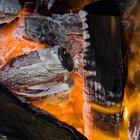
How to Smoke a Brisket With an Offset ...
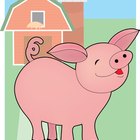
How to Make Homemade Propane Pig Cookers
How do I Cook a Prime Rib on an Open ...

How to Cook in a Farberware Rotisserie
How Long Will Smoked Meat Last?

Tools Used in Food Processing

How to Cook With a Gas Fireplace

How to Freeze Bratwurst

How to Smoke Haddock
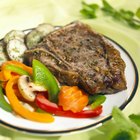
How to Cook Steaks on a Smoker
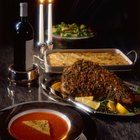
How to Smoke a Leg of Lamb Using an ...
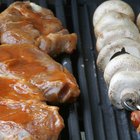
How to Use a Smoker Box for Gas Grilling
References
- "Good Eats", Season 5, Episode 5: "Scrap Iron Chef"
Writer Bio
Beverlee Brick began writing professionally in 2009, contributing to various websites. Prior to this, she wrote curriculum and business papers in four different languages. As a martial arts and group fitness instructor, she has taught exercise classes in North America, Europe and Asia. She holds master's degrees in French literature and education.